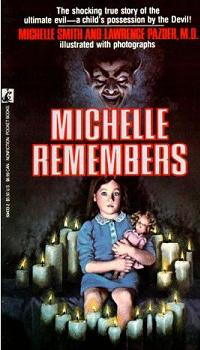One of our staff members is contributing considerably to a News Archiving service at Mu. Any well educated (Masters, PhD or above) users who wish to make comments on news sites, please contact Jim Burton directly rather than using this list, and we can work on maximising view count.
Often repeated themes in anti-pedophile literature: Difference between revisions
The Admins (talk | contribs) |
The Admins (talk | contribs) |
||
| Line 13: | Line 13: | ||
A number of recurring, emotivist themes can be seen in literature, TV dramas and low-brow media reporting of real events: | A number of recurring, emotivist themes can be seen in literature, TV dramas and low-brow media reporting of real events: | ||
*'''[[Wikipedia:Think of the children|Think of the children]]''' - Just for once. Can we just end this debate by thinking of them. | *'''[[Wikipedia:Think of the children|"Think of the children"]]''' - Just for once. Can we just end this debate by thinking of them. | ||
*'''"Largest ever" porn ring''' (every other month). | *'''"Largest ever" porn ring''' (every other month). | ||
*'''"Worst kind" of images or "The most disturbing"'''. We seemingly never get to see or hear from the investigators, since they might be [[Research: Child Pornography|"giggling and laughing"]] at images of children "giggling and laughing". Maybe it is the indifference or pleasure of the children depicted they may find disturbing. | *'''"Worst kind" of images or "The most disturbing"'''. We seemingly never get to see or hear from the investigators, since they might be [[Research: Child Pornography|"giggling and laughing"]] at images of children "giggling and laughing". Maybe it is the indifference or pleasure of the children depicted they may find disturbing. | ||
Revision as of 21:18, 13 June 2022

Popular child abuse literature ("When Daddy Comes Home" type True Story Child Abuse Books) and television dramas (e.g. Law and Order: SVU) often adopt a stereotyped range of narrative structures and themes. Sometimes even present in professional literature, these themes are often said to be so trite and hackneyed, they undermine and obscure the true nature of abusive and dysfunctional relationships.
Narrative structure and cues
- An undisturbed, unsuspecting, idealized "normality" is centered early on, allowing the reader to situate themselves. White, suburban, Christian America is often implied as the environment. Children playing children's games in the sunshine behind a white haze. The fragile and endangered institution of childhood is invoked as clean and pure - a world apart from that of the "consenting adults".
- The abuser's perceived motive is constructed as "sinister". The role of the body in giving pleasure is discarded in favor of sadism and rapturous "taking".
- The abuser's world is grubby and corrupted - he is portrayed as heavy breathing, grasping and prone to excessive perspiration.
- Any recall of events by the child is negative, by political/narrative necessity.
Media & literary themes
A number of recurring, emotivist themes can be seen in literature, TV dramas and low-brow media reporting of real events:
- "Think of the children" - Just for once. Can we just end this debate by thinking of them.
- "Largest ever" porn ring (every other month).
- "Worst kind" of images or "The most disturbing". We seemingly never get to see or hear from the investigators, since they might be "giggling and laughing" at images of children "giggling and laughing". Maybe it is the indifference or pleasure of the children depicted they may find disturbing.
- "Loss of innocence", "cruelly robbed of her childhood", "scarred for life".
- "I feel your pain" - said every female interviewer.
- "They didn't have a voice", and would never have been believed if they chose to "speak out".
- "Traumatological", "Attachment" psychology and "Co-dependency", importation of themes present in modern "moralistic psychiatry" identified by Bruce Rind.
- "The abuse of trust", is a common theme with incest.
- "She froze", blanked out. Her body became stiff, lifeless, like a wooden doll.
- Things happened to him, "which he was too young to understand!"
- "Listen to the victims", for they "speak from their lived experience" (during a trial, before guilt has been established).
- "Hidden suffering" is often used to evoke both suspicious and sympathetic natures. They just wished they could escape.
- "Dead inside", "Soul destroyed", "Psychological murder" describes the inner turmoil.
- "It was all about the power".
- "The victim got a life sentence" is used to put into focus a perceived imbalance of justice, one not actually borne out by the evidence.
- The process of "justice" gave a degree of "closure" to the matter. Effect on adult whitewashed.
- The sentence must "fit the crime", for "justice to be seen to be done", and so we begin the circular process of ever increasing perceived wrongs and "fitting punishments".
